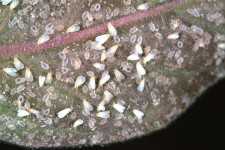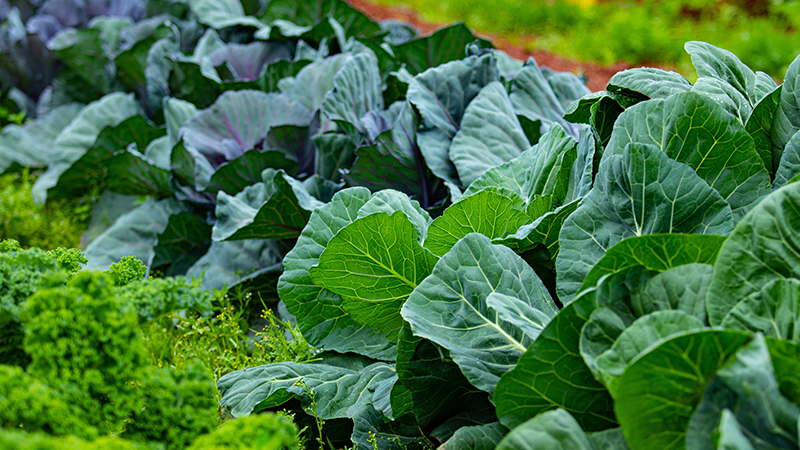Reduce Greenhouse Whitefly Destruction On Tomatoes

Greenhouse whitefly, Trialeurodes vaporariorum, is one of the most destructive insect pests of greenhouse-grown tomatoes. Greenhouse whiteflies are phloem-feeders, and both the nymphs and adults have piercing-sucking mouthparts, which are used to withdraw plant fluids.
The nymphs cause greater plant damage because they feed more extensively than adults. Direct feeding damage to tomatoes includes curling of leaves, leaf yellowing, chlorotic mottling, spotting of fruit, and stunting and wilting of infested plants. Nymphs can cause indirect damage by secreting copious amounts of honeydew, which is a sticky clear liquid that serves as a growing medium for black sooty mold fungi.
Management Pointers
Here are three tips to help keep whitefly from taking over greenhouse tomatoes:
1 Scouting techniques. Scouting the tomato crop regularly
using yellow sticky cards for adults, and visual inspections by examining leaf undersides for eggs, nymphs, and pupae will help you avoid outbreaks of greenhouse whitefly. Weed removal, both within and outside the greenhouse, is important as many weed species serve as reservoirs for greenhouse whitefly populations.
2 Proper application of chemical controls. Contact insecticides may be used to regulate or suppress greenhouse whitefly populations; however, it is important to obtain thorough coverage of leaf undersides and make multiple applications as both the egg and pupa stage is not susceptible to most insecticides. Therefore, applications should be implemented frequently enough to kill both nymphs and/or adults that were previously eggs and/or pupae. In addition, develop appropriate rotation programs by using insecticides with different modes of action in order to avoid the prospect of resistance developing in greenhouse whitefly populations.
Consult insecticide labels for information regarding resistance management.
3 Success With Biocontrols. The use of biological control agents has proven to be successful against greenhouse whitefly. The primary biological control agent is the parasitoid, Encarsia formosa. The females lay eggs inside the nymphal stages of greenhouse whiteflies. Parasitized whiteflies eventually turn black during the pupal stage. Adults emerge from these parasitized pupae.
In addition to direct kill via parasitism, adults may kill young nymphs by feeding on them (host-feeding). Encarsia formosa performs best at temperatures between 70ºF and 80ºF and a relative humidity between 50% and 80%. This parasitoid is less effective on tomatoes with an abundance of hairs or trichomes because these obstructions make it difficult for the parasitoid to detect greenhouse whiteflies and inhibits the ability of adult females to lay eggs in nymphs.
Another parasitoid that may be effective against greenhouse whitefly is Eretmocerus eremicus, which also host-feeds on young nymphs. This parasitoid is supposedly more tolerate of higher temperatures and pesticide residues than E. formosa. Before releasing any parasitoids into the greenhouse, be sure to remove all yellow sticky cards, as parasitoids are attracted to yellow and may be captured, thus reducing the effectiveness of the biological control agents. Wait three to four days before replacing yellow sticky cards. Consult with your biological control supplier to determine the frequency of release and release rate.
When dealing with greenhouse whitefly populations in greenhouse-grown tomatoes, it is important to act preventatively whether scouting, applying insecticides, or releasing biological control agents. Once greenhouse whitefly populations reach outbreak proportions, then options for management are limited, which may result in an economic loss.









